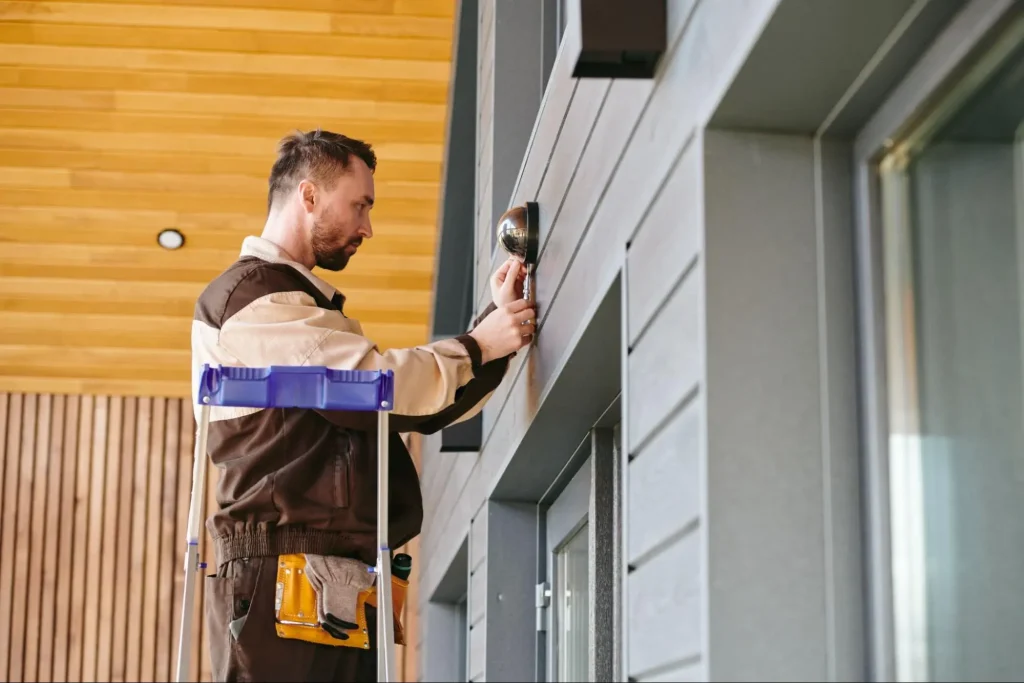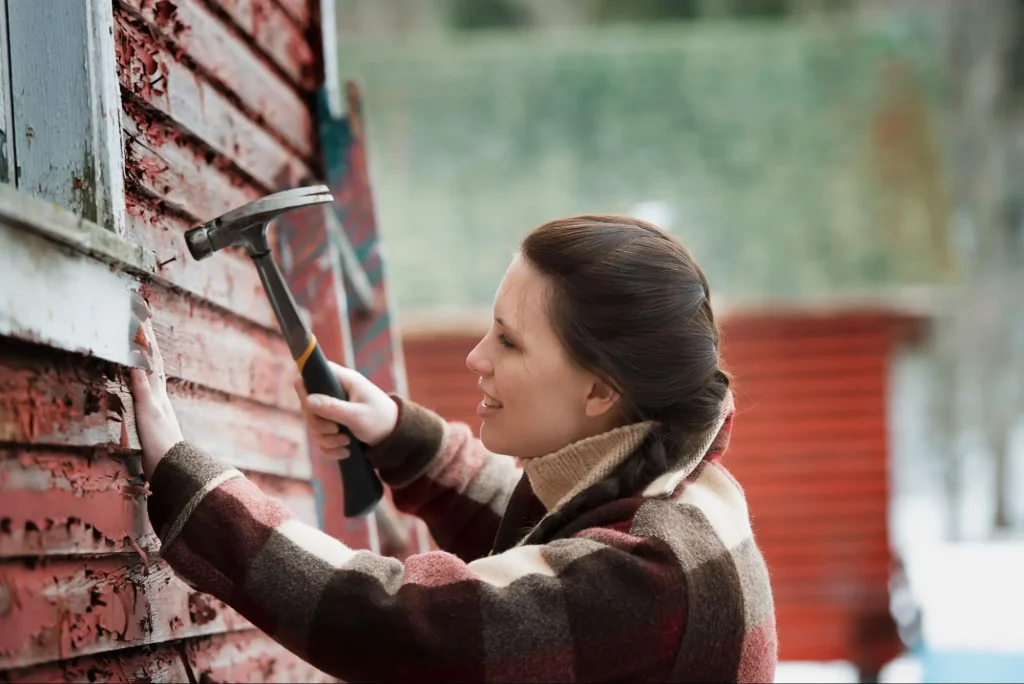
Maintaining the structural integrity of your home is essential to ensuring its longevity and safety. By regularly inspecting and maintaining your home’s structure, you can prevent minor issues from escalating into costly repairs. Simple actions, such as checking for foundation cracks and water damage, can go a long way in preserving the strength of your home.
To keep your home in top shape, consider scheduling professional inspections. These experts can spot hidden issues that an untrained eye might miss. They will assess key areas like the roof, foundation, and walls to ensure everything is in good condition.
Routine upkeep, combined with timely repairs, can significantly improve your property’s structural health. Fixing issues like sagging roofs or settling foundations promptly can help you avoid major problems down the line. Investing in preventative measures today can save you time, money, and stress in the future.
Understanding structural integrity helps you maintain your home and avoid costly repairs. Key elements like the foundation and walls play crucial roles, and recognizing early signs of problems can prevent larger issues.
The foundation is essential for your home’s stability. It supports the entire structure and transfers the building’s load to the ground. A solid foundation prevents uneven settling and structural damage.
Types of foundations include slab, crawl space, and basement. Each type has its own strengths. Regardless of type, you must ensure it remains in good condition. Regular checks for wall cracks and shifts can prevent major issues.
Water is a common threat. Poor drainage can erode foundation stability. Ensure gutters direct water away from the house. Soil characteristics around your home also matter. Certain soils expand and contract, which can stress the foundation.
Being aware of structural issues is crucial for maintaining your home. Look for cracks in walls and floors, which may indicate shifting or settling foundations. Pay attention to doors and windows that stick or don’t close properly.
Other signs include bowing walls or uneven floors. These could point to severe structural stress. Cracks can appear near the corners of windows and doors. Small, hairline cracks may not be alarming, but larger or expanding ones warrant professional inspection.
Also, check for any visible gaps between walls and ceilings or floors. This may indicate that parts of the structure are moving separately. Regularly inspecting your home for these signs helps you address problems early, keeping repairs manageable and your home safe.

Regular inspections and maintenance are essential for the safety and longevity of your home. By scheduling professional inspections and keeping up with DIY checks, you can catch potential problems early. Maintaining both the exterior and interior of your home can prevent costly repairs later.
Hiring a professional for regular home inspections can significantly improve your home’s structural integrity. Professionals have the training to spot issues that may be missed by an untrained eye. For example, scheduling a structural integrity inspection is crucial to identify any underlying problems with your home’s foundation, walls, or roof. If you live in an area prone to natural disasters, such as floods or earthquakes, you should get inspections more frequently.
An annual inspection by a qualified structural engineer can help ensure that all components of your home are safe and sound. They will provide a detailed report, including photos and recommended actions, which helps you make informed decisions about necessary repairs or maintenance.
While professional inspections are important, you can also perform your own checks in between professional visits. Start by examining your home for visible cracks in walls, ceilings, and foundations. Look for any signs of moisture or mold, particularly in the basement and attic. Check windows and doors for proper alignment, as misalignment can indicate foundation problems.
Keep an eye out for sagging floors or uneven surfaces, as these could be warning signs of structural issues. Inspect your roof and attic regularly for any missing shingles or signs of leaks. Simple tools like a flashlight and a moisture meter can help you carry out these inspections effectively. Staying vigilant can catch small problems before they become big issues, potentially saving you a lot of money and hassle.
Maintenance extends beyond just inspections. Keep your home’s exterior in good shape by regularly cleaning gutters to prevent water damage. Fix any cracks in the foundation or walls immediately to avoid further deterioration. Painting or sealing your home’s exterior can also provide protection against the elements.
Inside your home, regular maintenance includes checking plumbing for leaks, ensuring the HVAC system is functioning correctly, and replacing old electrical wiring to prevent fire hazards. Pay close attention to the attic and basement, as these areas are often overlooked but can harbor significant issues if not maintained properly. Proper insulation and ventilation in the attic can prevent moisture buildup and damage.
Regular inspections and maintenance are key to keeping your home safe and sound. Stay proactive and address any issues as soon as they arise to maintain your home’s structural integrity for years to come.

Keeping your home’s structure in good condition requires targeted repairs and renovations. Focus on addressing foundation issues, upkeeping doors and windows, and maintaining the roof and chimney. Here are some key steps to ensure each area is properly maintained.
Foundation issues can lead to severe damage if not addressed promptly. Look for cracks in the foundation or foundation walls. These may indicate settlement or other structural issues.
Steps to fix foundation problems:
Repairing foundation problems early can prevent more costly repairs in the future and ensure your home remains safe and secure.
Doors and windows are crucial for the stability and insulation of your home. Ensure they are functioning correctly to prevent drafts and potential structural issues.
Proper upkeep of doors and windows will help maintain your home’s structural integrity and improve energy efficiency.
A well-maintained roof and chimney are essential for protecting your home from the elements. Neglecting these areas can lead to significant structural problems.
Roof Maintenance:
Chimney Care:
Maintaining the roof and chimney will protect your home from water damage and other structural issues. Regular inspections and timely repairs in these areas are crucial for the overall health of your home.
Maintaining your home’s structure involves addressing water problems, choosing the right materials, and preparing for natural events. These tasks help prevent damage and ensure your home remains safe and secure.
Water can greatly damage your home if not managed properly. Waterproofing your foundation walls is crucial. This stops water from seeping in and causing damage. Fix any cracks found during the waterproofing process.
Proper drainage is also key. Ensure your home has good drainage systems to direct water away from the foundation. Rain gutters and downspouts should be clean and in good condition.
Soil grading around your home should slope away from the foundation. This helps prevent flooding and water pooling. Proper ventilation in basements and crawl spaces reduces moisture buildup, preventing mold and wood rot.
Choosing the right materials for your home can greatly impact its longevity. For structural components, use high-quality lumber, steel, or concrete. These materials resist damage from elements and pests.
Structural upgrades can enhance your home’s integrity. Reinforcing beams or adding support posts can distribute weight more evenly. Upgrading to stronger materials during renovations can prevent future problems.
Regular inspections by professionals can identify weak points. Addressing these early with the right materials and fixes can prevent costly repairs down the line. Consider using moisture-resistant materials in areas prone to water exposure, such as basements and bathrooms.
Preparing your home for natural disasters is essential. Earthquake-resistant designs and materials can prevent severe damage. This includes flexible building materials that absorb shocks and anchoring systems that keep the structure connected during tremors.
For areas prone to flooding, raising the foundation or constructing barriers can protect against water damage. Install sump pumps in basements to remove water quickly.
Ensure your home has proper ventilation to reduce humidity and prevent mold growth, especially after natural events. Reinforce roofs and walls to withstand high winds and heavy rains. Pests can also damage your home’s structure, so pest-proofing measures are important for long-term upkeep.
Maintaining the integrity of your home’s structure is crucial for safety and longevity. Regular inspections can help spot potential issues early.
By following these guidelines, you can maintain a safe and sound home for years. Remember, preventative measures save time and money. Always prioritize the structural integrity of your home.For professional home maintenance and remodelling service,Kaminskiy Care and Repair has the expertise and credibility to maintain your home in top shape. Contact us today
Perform regular inspections of your home, including the foundation, roof, and walls. Address any issues promptly, such as leaks or cracks. Keep gutters clean and ensure proper drainage around your home to prevent water damage.
Inspections of the foundation, roof, and structural components like beams and joists are essential. Look for cracks, sagging, or any signs of water intrusion. A professional inspection every few years can identify problems early on.
Look for cracks in walls, floors, or the foundation. Sagging rooflines and uneven floors are also signs of trouble. Water stains on ceilings and walls suggest leaks, which can lead to rot and other structural issues.
For older homes, regular maintenance is crucial. Inspect and repair any damage to the roof, siding, and foundation. Update plumbing and electrical systems to prevent leaks and fires. Reinforce structural elements as needed and maintain proper ventilation to prevent moisture buildup.